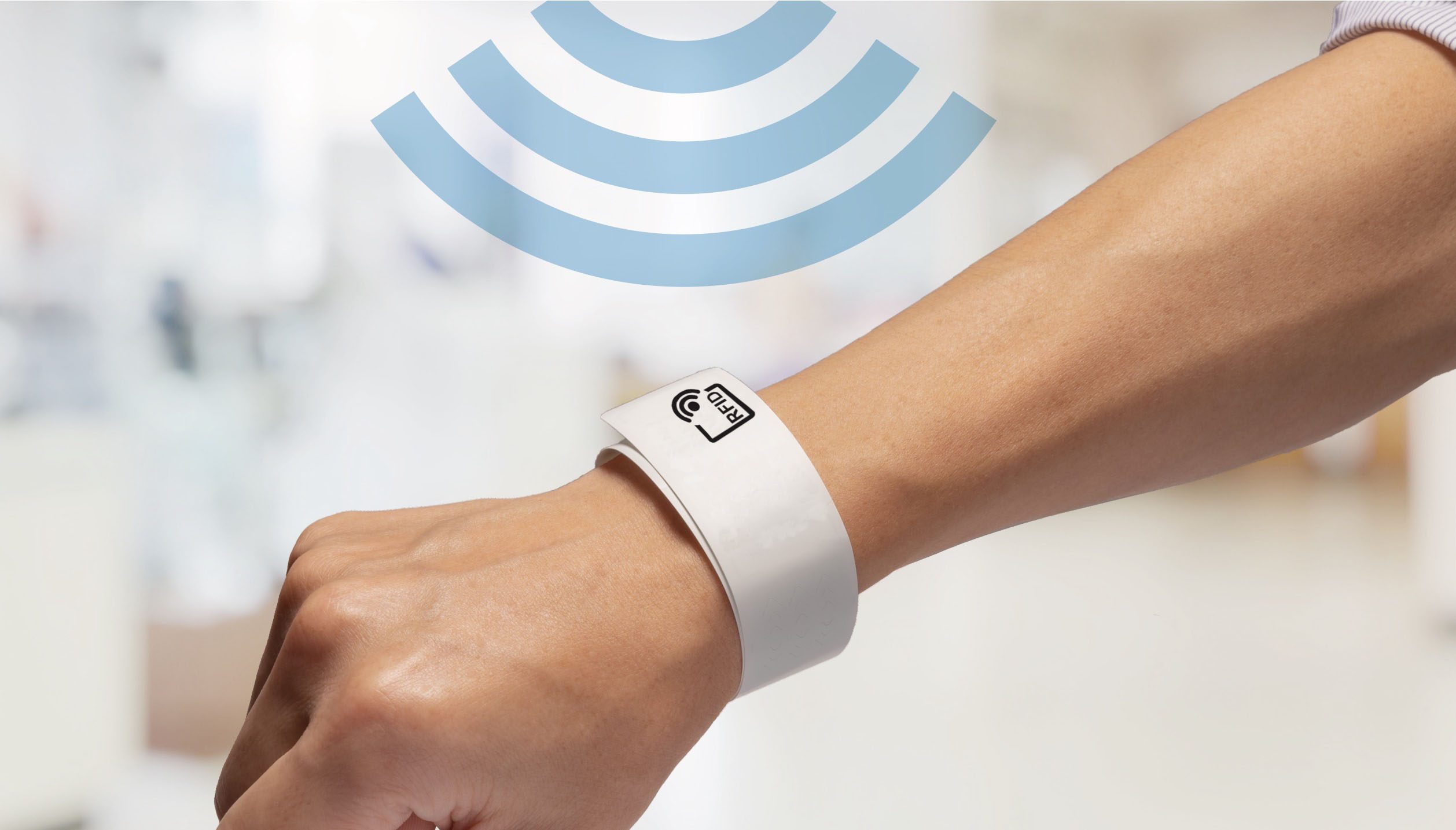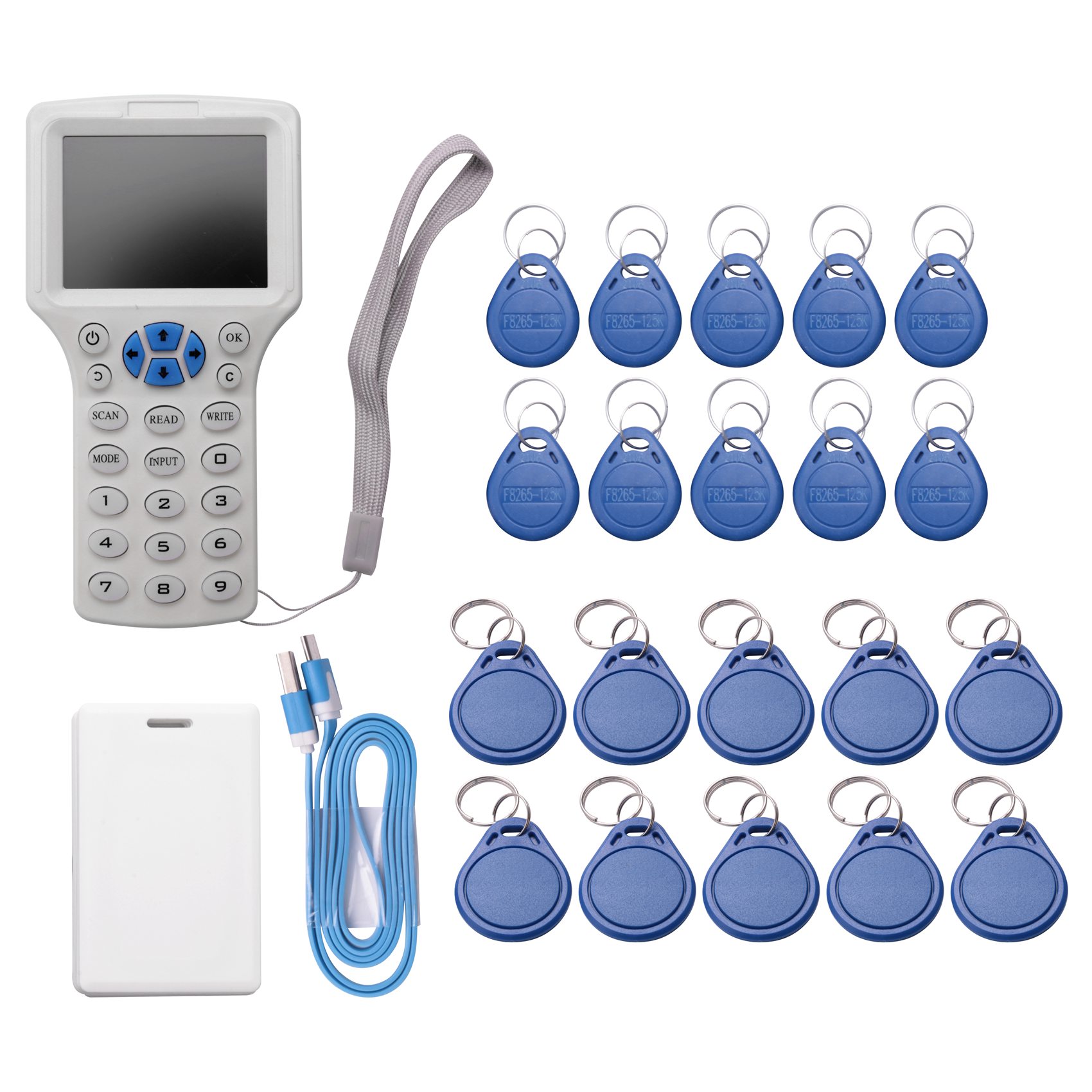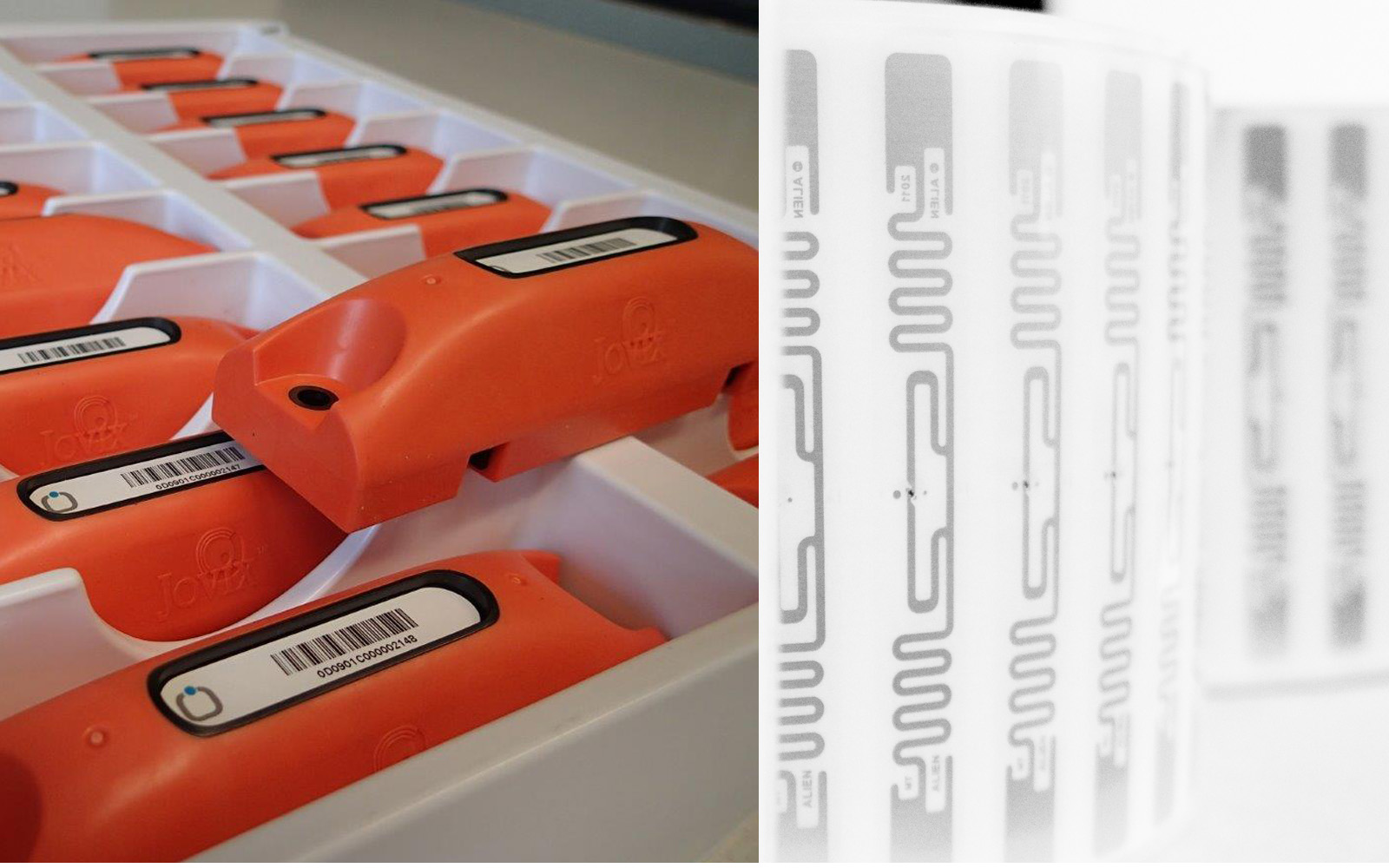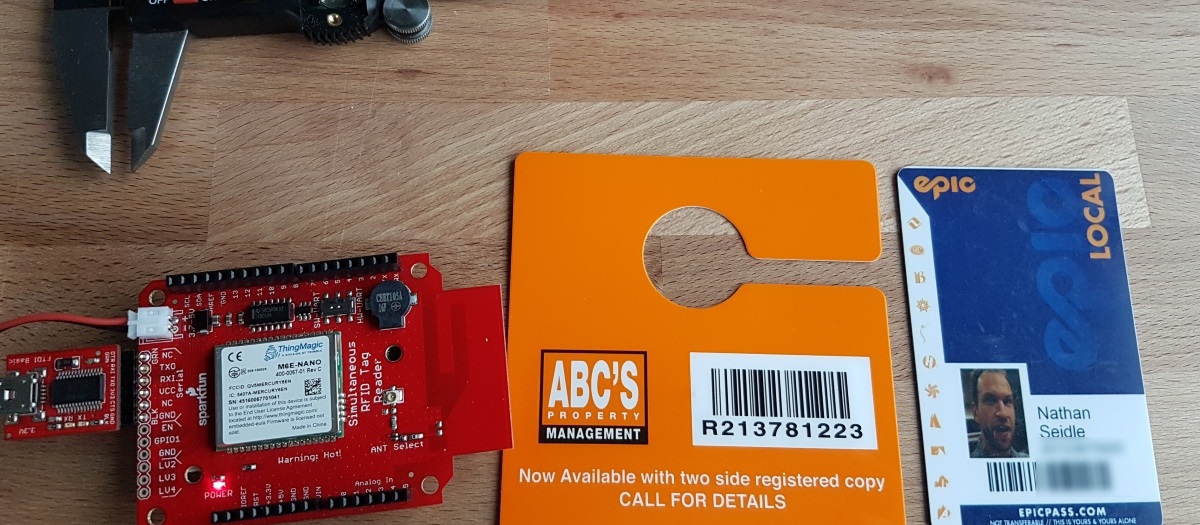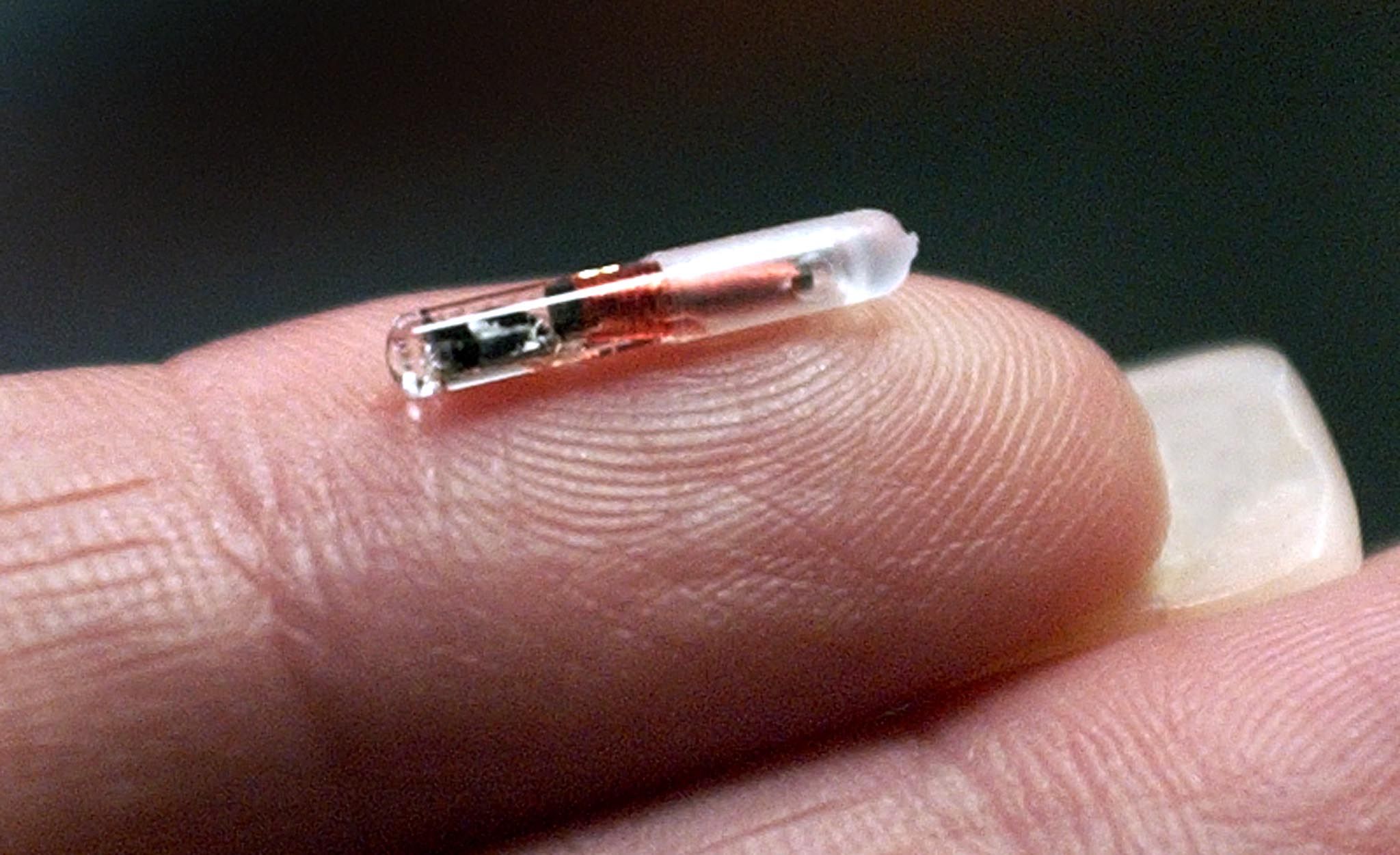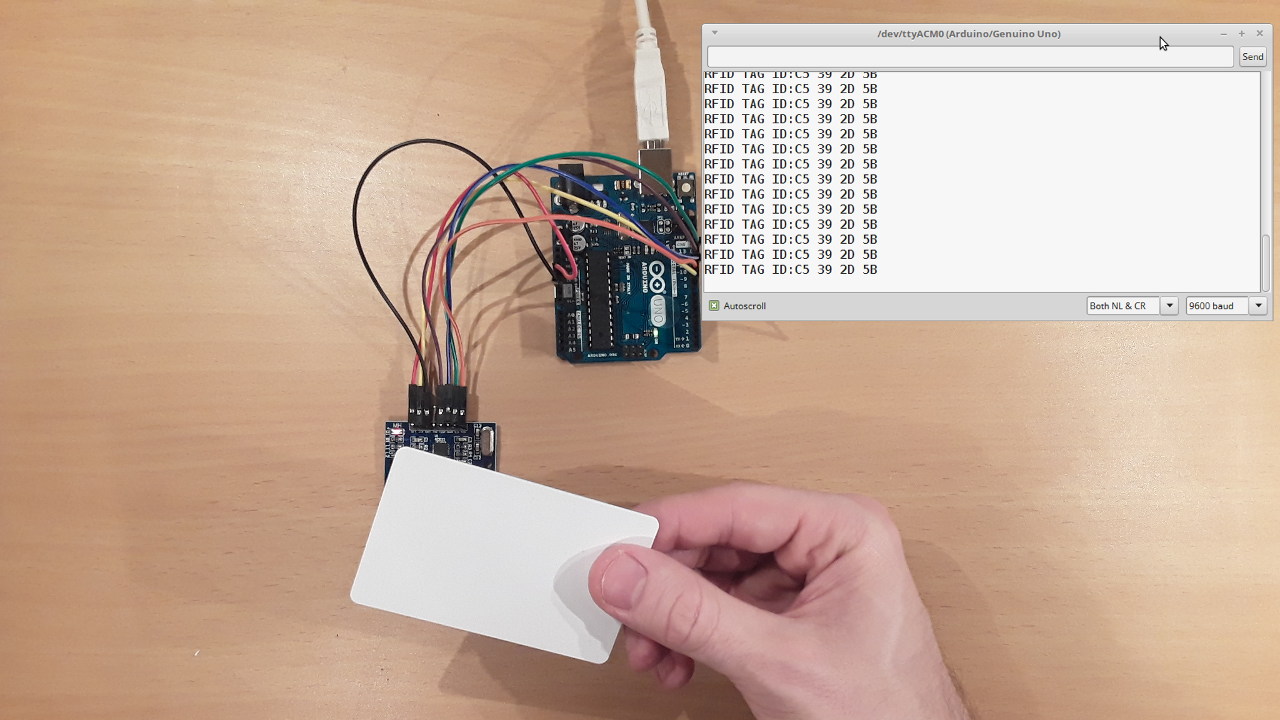Introduction
Welcome to the world of RFID wristbands! In today’s technological era, where convenience and efficiency are paramount, RFID wristbands have emerged as a popular solution for various applications. Whether you’re attending a music festival, a sporting event, or even staying at a resort, you may have already encountered these innovative devices. But what exactly is an RFID wristband and how does it work?
An RFID wristband, which stands for Radio Frequency Identification, is a wearable technology that incorporates a small chip and antenna to transmit and receive data wirelessly. It serves as a convenient replacement for traditional forms of identification, such as tickets, access cards, or even cash. By simply wearing the wristband, individuals can seamlessly access restricted areas, make purchases, or track their movements, all with a touch or a wave.
The concept of RFID technology is not new; it has been used in various industries for years. However, the implementation of RFID into wristbands has revolutionized the way we interact and engage with our surroundings. These wristbands have become increasingly popular due to their versatility, durability, and ease of use, offering a range of benefits for both event organizers and attendees alike.
Throughout this article, we will explore the different types of RFID wristbands, their mechanisms, and the benefits they bring. We will also delve into the various applications where RFID wristbands are commonly utilized and discuss important considerations to keep in mind when implementing this technology. By the end, you will have a comprehensive understanding of RFID wristbands and their significant role in enhancing various industries.
What is an RFID Wristband?
An RFID wristband is a wearable device that utilizes radio frequency identification (RFID) technology to store and transmit data wirelessly. It consists of a small integrated circuit (IC) chip and an antenna embedded within a comfortable and durable wristband. The IC chip holds unique identification information and other relevant data that can be accessed by RFID readers.
RFID wristbands are designed to replace traditional forms of identification, such as tickets, access cards, or physical tokens, providing a more convenient and efficient method of access control, payment, and tracking. The wristbands can be easily worn by individuals, ensuring they have constant and effortless access to designated areas or services.
The RFID technology employed in wristbands works through electromagnetic fields. When the wristband comes into proximity with an RFID reader, the antenna in the wristband generates a small electrical current. This powers the IC chip and enables the transmission of data between the wristband and the reader via radio waves.
Given their versatility, RFID wristbands have gained popularity in a wide range of applications. They are commonly used in entertainment venues such as theme parks, festivals, concerts, and sporting events, where they provide a seamless and secure way of managing large crowds and enhancing the overall experience for attendees.
Additionally, RFID wristbands are also utilized in healthcare facilities, enabling efficient patient identification, medication tracking, and access control. In resorts and hotels, RFID wristbands are used to grant access to various amenities, such as pools, gyms, or exclusive areas. They can also serve as electronic wallets for cashless transactions, replacing the need for physical currency or cards.
Overall, RFID wristbands have revolutionized the way we interact with our surroundings, integrating technology seamlessly into our daily lives. With their convenience, security, and versatility, these wristbands offer a new level of efficiency and personalized experiences across various industries.
How does an RFID Wristband Work?
An RFID wristband operates on the principle of radio frequency identification technology. It consists of two key components: an integrated circuit (IC) chip and an antenna. The IC chip stores and processes data, and the antenna allows for wireless communication with RFID readers.
When an RFID wristband comes into proximity with an RFID reader, the reader emits an electromagnetic field that powers the wristband’s IC chip. This power enables the IC chip to transmit the stored data back to the reader. The communication between the wristband and the reader occurs through radio waves, allowing for a wireless and contactless exchange of information.
The IC chip in the wristband contains a unique identification number known as the Electronic Product Code (EPC). This EPC is associated with an individual or an item and serves as a digital identifier. Additionally, the IC chip can also store other relevant data such as personal details, access permissions, payment methods, or loyalty program information.
When the wristband is brought near an RFID reader, the reader’s electromagnetic field induces a current in the antenna of the wristband. This current powers up the IC chip, which then transmits the stored data back to the reader. The reader captures the transmitted data and utilizes it according to the specific application requirements.
The communication between an RFID wristband and a reader can occur in different ways. The most common method is called “passive RFID.” In passive RFID, the wristband does not have its own power source; instead, it relies on the energy provided by the reader to power the IC chip. This makes passive RFID wristbands cost-effective and eliminates the need for periodic battery replacement.
Another method is “active RFID,” where the wristband contains its own power source, typically a battery. Active RFID wristbands have a longer communication range and can transmit data at greater distances compared to passive wristbands. However, they are generally more expensive and require periodic battery replacement.
Overall, the functionality of an RFID wristband revolves around the communication between the IC chip and the RFID reader. The combination of wireless power transfer and data transmission enables a seamless and efficient user experience, simplifying tasks such as access control, payment processing, and identification across a wide range of applications.
Types of RFID Wristbands
RFID wristbands come in various types, each designed to cater to specific applications and requirements. These different types of wristbands offer unique features and capabilities, making them suitable for a wide range of industries and use cases.
- Disposable RFID Wristbands: These wristbands are intended for single-use or short-term events. They are typically made of disposable materials such as paper or vinyl. Disposable RFID wristbands are cost-effective and come with pre-printed or customizable designs.
- Reusable RFID Wristbands: As the name suggests, reusable RFID wristbands are designed for multiple uses. They are made of durable materials such as silicone, fabric, or plastic, ensuring longevity and resistance to wear and tear. These wristbands can be easily cleaned and re-issued for different events or individuals.
- Adjustable RFID Wristbands: Adjustable wristbands allow for easy resizing to fit different wrist sizes. They often feature adjustable closures such as snap buttons or adjustable straps, providing a comfortable and secure fit for individuals of all ages.
- Secure RFID Wristbands: Secure wristbands are equipped with additional security features to prevent tampering or unauthorized removal. They may include features such as tamper-evident closures, holographic overlays, or unique locking mechanisms, ensuring the integrity of the wristband in high-security environments.
- Customized RFID Wristbands: Customizable wristbands offer the option to personalize the design, colors, and branding on the wristband’s surface. These wristbands are popular in events or organizations that want to showcase their unique identity or sponsor logos.
- Waterproof RFID Wristbands: Waterproof wristbands are designed to withstand exposure to water or moisture. These wristbands are ideal for applications such as water parks, resorts, or swimming events, where individuals can wear them confidently even in wet environments.
Each type of RFID wristband has its own advantages and considerations, depending on the specific requirements of the application. Event organizers, businesses, and institutions can choose the most suitable type of wristband based on factors such as durability, security, customization options, and the expected duration of use.
Benefits of Using RFID Wristbands
RFID wristbands offer a multitude of benefits for both event organizers and attendees. The integration of RFID technology into wristbands has transformed the way we access, interact, and engage in various environments. Here are some of the key benefits of using RFID wristbands:
- Convenience: RFID wristbands provide a convenient and seamless user experience. Attendees can effortlessly access restricted areas, make secure transactions, and engage in activities without the need for physical tickets, cash, or cards. With a simple touch or wave of their wristbands, individuals can easily navigate through events and enjoy a hassle-free experience.
- Speed and Efficiency: RFID wristbands streamline processes such as admissions, access control, and cashless payments. Attendees can enter venues quickly, reducing long queues and wait times. The ability to make contactless payments eliminates the need for carrying cash or credit cards, improving transaction speed and efficiency.
- Enhanced Security: RFID wristbands incorporate secure identification features, making them less susceptible to counterfeiting or unauthorized access. The unique identification numbers within the wristbands ensure that only authorized individuals can gain entry to specific areas, adding a layer of protection to events and venues.
- Data Insights: RFID wristbands provide valuable data insights for event organizers and businesses. By tracking attendee movement and behavior, organizers can gather valuable information related to crowd flow, popular areas, and consumer preferences. This data can be used to optimize operations, enhance marketing strategies, and improve overall event experiences.
- Improved Guest Experience: RFID wristbands contribute to a better guest experience by eliminating the need for physical tickets or access cards. Attendees can freely enjoy activities and attractions, without the worry of losing or misplacing their tickets. Cashless payment options also reduce the inconvenience of carrying and handling cash, ensuring a smoother and more enjoyable experience for attendees.
- Customization and Branding: RFID wristbands can be customized with unique designs, colors, and branding elements. This allows event organizers, sponsors, and businesses to showcase their brand identity and create a cohesive and immersive experience for attendees. Customized wristbands can also serve as keepsakes or souvenirs, extending the event experience beyond the actual event dates.
These are just a few of the many benefits that RFID wristbands bring to various industries. From improved operations and enhanced security to enhanced guest experiences and valuable data insights, RFID wristbands continue to revolutionize the way we engage and interact in events, venues, and other environments.
Common Applications of RFID Wristbands
RFID wristbands have found widespread adoption in a variety of industries and applications. Their versatility, convenience, and security make them an ideal solution for streamlining operations and enhancing the user experience. Here are some of the common applications where RFID wristbands are utilized:
- Events and Festivals: RFID wristbands have become a staple at music festivals, sporting events, and conferences. These wristbands serve as access passes, enabling attendees to enter the venue, access VIP areas, and attend specific activities or performances. They can also be linked to personal accounts for cashless payments or serve as a means for social media integration and interactive experiences.
- Theme Parks and Water Parks: RFID wristbands are extensively used in theme parks and water parks for admission, access control, and locker rentals. They enhance guest experiences by providing seamless access to rides and attractions, eliminating the need for paper tickets or access cards. Additionally, wristbands can be linked to guests’ accounts for cashless payments and photo linking.
- Resorts and Hotels: RFID wristbands are popular in the hospitality industry for guest identification, access control, and amenities management. Guests can use their wristband as a room key, granting them entry to their accommodation and other hotel facilities like pools, gyms, or restaurants. The wristbands also offer a convenient way to make cashless payments within the resort or hotel premises.
- Healthcare Facilities: In hospitals and healthcare facilities, RFID wristbands are used for patient identification and tracking. This helps prevent mix-ups, ensure accurate medication administration, and enhance patient safety. The wristbands can also facilitate secure access control to restricted areas, protecting sensitive medical information.
- Cashless Payment Solutions: RFID wristbands are transforming the world of cashless payments, with applications in stadiums, amusement parks, and music venues. Attendees can load funds onto their wristbands and use them for purchases at food stalls, merchandise stands, or even for ride tickets. This eliminates the need to carry physical cash or credit cards and enables speedy and secure transactions.
- Access Control and Security: RFID wristbands provide secure access control in various environments, such as corporate offices, government buildings, and sports facilities. The wristbands allow authorized individuals to enter restricted areas while maintaining a high level of security. They can also be combined with biometric authentication for an added layer of verification.
These are just a few examples of the diverse applications where RFID wristbands are utilized. The adaptability and versatility of this technology make it a valuable tool for improving operations, enhancing user experience, and ensuring the security and efficiency of various industries.
Considerations When Using RFID Wristbands
While RFID wristbands offer numerous benefits and applications, there are several considerations to keep in mind when implementing this technology. Understanding these considerations is crucial to ensuring the successful integration and optimal utilization of RFID wristbands. Here are some key factors to consider:
- Privacy and Data Security: RFID wristbands store and transmit personal data, making privacy and data security paramount. It is essential to implement robust encryption protocols and security measures to protect the information stored on the wristbands and during data transmission. Compliance with relevant privacy regulations is also crucial.
- Integration with Existing Systems: Before implementing RFID wristbands, it is important to assess their compatibility and integration with existing systems. Consideration should be given to the compatibility with access control systems, payment processing platforms, or other relevant technologies to ensure seamless integration and functionality.
- Resistance to Wear and Tear: RFID wristbands should be durable enough to withstand the rigors of daily use or extended wear. Depending on the application, wristbands may be exposed to water, sunlight, or physical impacts. Choosing wristbands made from robust materials and ensuring proper sealing and protection against environmental factors is essential for their longevity.
- User Education and Support: Effective user education and support are necessary for a successful implementation. Provide clear instructions to users on how to wear, use, and take care of the wristbands. Offer dedicated support channels to address any issues or questions that may arise, ensuring the smooth operation and positive user experience.
- Scalability and Manageability: Consider the scalability and manageability of the RFID wristband system. Depending on the application, the number of wristbands in circulation and their associated data could significantly increase. Choosing a system that can handle scalability and provide efficient management options, such as remote configuration and data analytics, is essential for long-term success.
- Costs and Return on Investment: Evaluate the costs associated with implementing RFID wristbands, including wristband production, readers, software, and ongoing maintenance and support. Assess the potential return on investment (ROI) based on factors such as increased operational efficiency, improved guest experiences, and potential revenue opportunities. Conduct a cost-benefit analysis to make informed decisions.
By considering these factors and addressing them appropriately, organizations can ensure a successful and effective implementation of RFID wristbands. It is essential to prioritize privacy, data security, integration, durability, user support, scalability, and cost-effectiveness to leverage the full potential of this technology.
Conclusion
RFID wristbands have revolutionized the way we interact and engage in various industries and applications. These wearable devices, powered by radio frequency identification technology, offer a seamless and convenient solution for access control, payment processing, and data management. Through their integration into events, theme parks, resorts, healthcare facilities, and more, RFID wristbands have enhanced efficiency, security, and the overall user experience.
By utilizing RFID wristbands, event organizers can streamline processes, improve crowd management, and gather valuable data insights to enhance future planning. Attendees benefit from the convenience of quick access, contactless payments, and the elimination of the need for physical tickets or cash, resulting in smoother and more enjoyable experiences.
However, implementing RFID wristbands requires careful consideration of factors such as privacy, integration, durability, user education, scalability, and cost-effectiveness. Organizations must prioritize data security, ensure compatibility with existing systems, choose durable wristband materials, provide user support, plan for scalability, and conduct thorough cost-benefit analyses.
In conclusion, RFID wristbands offer a powerful tool to enhance operations, security, and user experience across a wide range of industries. From events and theme parks to healthcare facilities and more, the versatility and convenience of RFID wristbands have transformed the way we interact with our environment. By understanding the benefits and considerations associated with RFID wristbands, businesses can leverage this technology to create seamless and memorable experiences for their customers.







